Carthage.. Tunisian whispers from the past
In the ninth century BC, on board a ship loaded with treasures, a Phoenician princess fled from Lebanon to Tunisia to establish a city on a Tunisian knoll 57 meters above sea level, 15 km from the current capital of Tunisia, and along 3 km on the White Sea coast, it is the city of "Carthage" in its infancy, which will later be the nucleus of an influential civilization in the history of the Mediterranean countries, and that Phoenician princess did not know what the future holds for that city from Great events and historical imprint that historians will emulate over time.
Show key points
- In 814 BC, the Phoenician princess Alyssa, fleeing from her brother's tyranny in Tyre, founded the city of Carthage on a Tunisian plateau, laying the foundation for a major Mediterranean civilization.
- The city's name "Carthage" originates from the Phoenician term "Qart Hadasht," meaning "new city," and was later Latinized due to Roman influence.
- Princess Alyssa, revered across the Mediterranean and portrayed diversely in various cultures, cleverly secured land by cutting a bull's hide into thin strips, claiming enough area to build Carthage.
- ADVERTISEMENT
- Carthage rose rapidly and became a dominant maritime power, establishing colonies across the western Mediterranean and rivaling Rome in both trade and military strength.
- According to historical and archaeological findings, including Carthaginian coins possibly depicting the Americas, the Carthaginians may have had knowledge of lands across the Atlantic long before Columbus.
- A series of three Punic Wars between Rome and Carthage eventually led to the city's downfall, with the Romans completely destroying Carthage in 149 BC during the Third Punic War.
- Despite its destruction, Carthage left a profound legacy in ancient history, remembered for its remarkable achievements in navigation, trade, and military strategy.
Etymology

In 814 BC, the city of Carthage was founded by Princess "Alyssa" or "Didon", and it was called "Earring Hadasht" which means in Phoenician "the new city", and its people worshiped "Malgaret", which means "King of the city", so the pronunciation turned to "Carthage" because of the Latin pronunciation of the Phoenician name "Qort Hadasht", and it has been famous for that name since then.
Recommend
Princess Alyssa Carthage Foundation
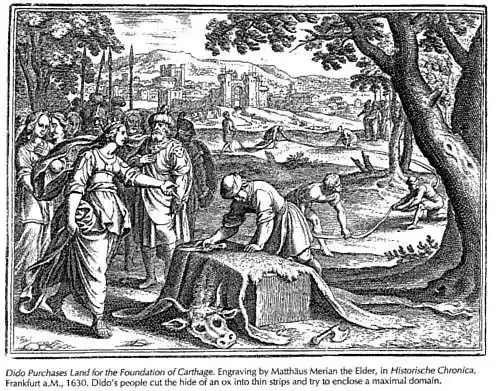
In Tunisia they call her "Alyssa" and venerate her and magnify her as a historical heroine, and in Lebanon and Syria they love her and see her as a symbol of strength, intelligence and beauty, and her name is "Elissa" or "Alissar", and in Morocco she is "Didion" or "Didon" the symbol of the invincible woman, while the West portrays her as a sincere lover who gave everything to love and did not take anything from him except death, she is the Phoenician princess "Alyssa", the son of King "Metn", the king of "Tyre" and the wife of the legendary being very wealthy "Zirkal Baal", the greatest priest of "Tyre". "Alyssa" transported a civilization on board a ship from Lebanon to Tunisia and founded the city of "Carthage" with great glory that competed with "Rome" at the height of its power, and the reason for her exit from the city of "Tyre" in Lebanon is due to her brother's pursuit of her after the death of her father, King "Metn", where he took over the rule after him and greed for the wealth of his brother-in-law after his death, and became famous as King "Bqmalion" or "Pygmalion". She deceived "Alyssa" known for her intelligence to survive herself and her money, so she told "Bakmalion" that she was going on a trip to bring treasures, so he thought she was going to bring her husband's treasures and provided her with men and ships, so "Alyssa" secretly agreed with her faithful and secretly transferred the treasures to her ship, and then transferred in front of her husband and his men bags full of sand and placed them under their guard on board the ship, and at sea she threw sand bags into the sea pretending that she was throwing her husband's treasures into the sea in honor of him, so the king's soldiers jumped "Bakmalion" into the sea behind the bags Only those loyal to her remained with her. Princess "Alyssa" sailed with her loyal owners and followers on a long journey to search for a place suitable for the establishment of a new city, until she reached the land of the king of the Maxween, who agreed to give her a piece of land the size of the skin of a bull, and the attendees were surprised by the approval of "Alyssa" on that very small area, but the smart princess cut the bull's skin and turned it into long fine ribbons and connected them to each other and made a long rope out of them, and surrounded by the plateau that is known today as "Bersa", which means "bull skin", and founded " Carthage as the nucleus of a new Phoenician colony that would extend its influence in the western Mediterranean and fight great wars against Rome.
Nascent Carthage

The plateau of "Persa" was the starting point for the construction of the great city of "Carthage", and Princess "Alyssa" made it a model for the city of "Tyre" and linked to it spiritually and administratively, so that this city grew rapidly and expanded to include lands around the western Mediterranean, which led to the establishment of the state of Carthage, which is called the "Punic state" and challenged the Roman Empire when it wanted to establish a developed civilization linking the eastern Mediterranean to its west. King "Gabon" King of the Maksuis was affected by the achievements, beauty and intelligence of "Alyssa" and asked to marry her, so she refused faithfully to her late husband, but he threatened to burn "Carthage", so she agreed after she took from him a royal promise to preserve the city, and on the wedding night she threw herself into the crematorium and died in front of his eyes, so her mention became famous in the world, especially the Western world, in which "Didun" or "Alyssa" became a symbol of love, sincerity and sacrifice, and "Alyssa" became one of the bravest women in history with "Cleopatra", "Zenobia" and "Semiramis".
The Golden Age of Carthage
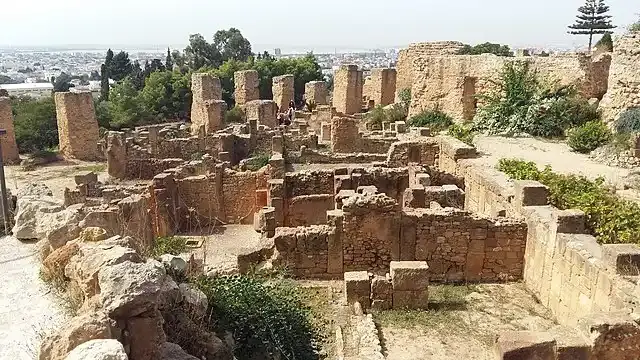
The state of Carthage expanded in the period between the seventh century BC and the third century BC and established new colonies along the western coast of the Mediterranean, whether on the African or Spanish coast, and extended its influence over some Mediterranean islands such as Sicily, Corsica and others, which made it turn into an empire with prestige and power, which made the Romans feel threatened. The Carthaginians, like the Phoenicians, were skilled and experienced in maritime trade and were the first to plant olives in Tunisia, and they also taught the Berbers the letters and used the Phoenician alphabet in writing their language.
America in the maps of the Carthaginians
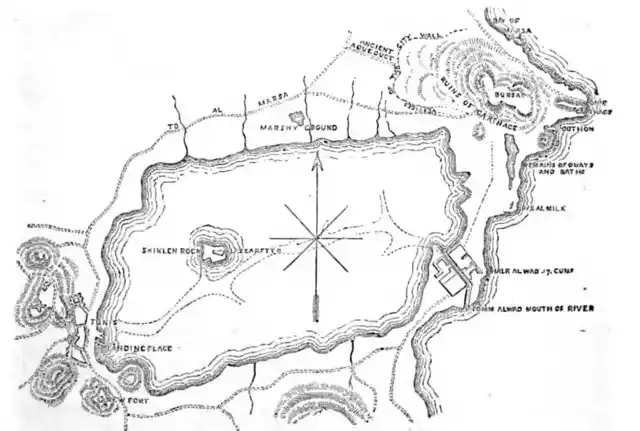
For example, in 1996, the American archaeologist "Mark McMinamin" discovered some Carthaginian coins dating back to 350 BC, on which he drew a map of the world with a drawing of the New World (the Americas), which caused a stir in the scientific community and many Europeans denounced this discovery and tried to interpret these drawings as ancient Phoenician letters. "Mark McMinamin" was not the first to say this, as the Greek historian "Diodorus" preceded him in 100 BC by saying that the Carthaginians knew a huge island very far away with many mountains and wide rivers, and they were hiding the secret of this enormous island because it was the source of their wealth, and it is said that the Carthaginians discovered "America" by chance by a commercial voyage that was sailing down the Atlantic African coast and deviated from its course due to a severe storm that led to its arrival in the Americas.
Carthage Wars with Rome (Punic or Punic Wars)
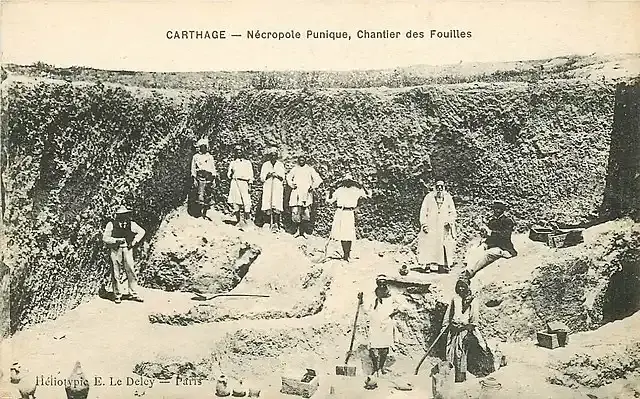
After the emergence of the Carthaginian Empire in the western Mediterranean, Carthage aspired to expand eastward and link the eastern Mediterranean Sea with its west, so there were major clashes between the civilizations of Carthage and the Roman civilization, and these conflicts were represented in three major wars called the "Punic Wars" or "Punic", and these wars lasted for nearly 43 years, and the war was land and sea as well.
First Punic War
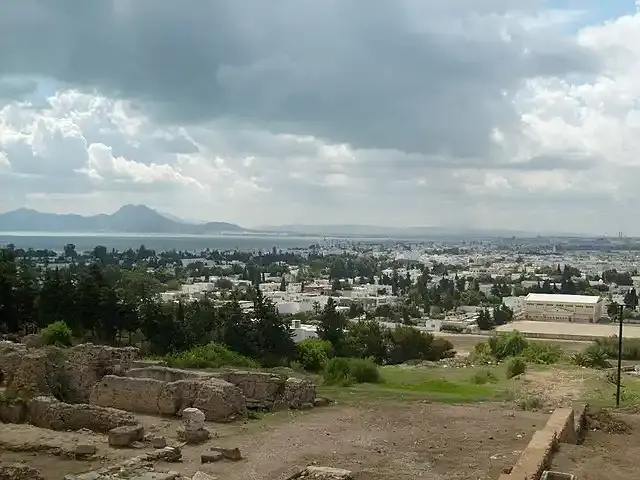
The war began in 264 BC when the Romans acquired part of the island of "Sicily" and besieged "Akragas", which was a major base for the Carthaginians, which prompted the Carthaginians to send a huge army to liberate the island in 262 BC, but it suffered a great defeat in a battle called the Battle of "Akragas". The Romans then created a powerful naval fleet to overcome the naval control of the Carthaginian fleet and were able to score a major victory over the Carthaginians in the largest naval battle in history in terms of the number of participants, called the Battle of Cape Iconos. In 255 BC, the Carthaginians requested a peace contract with the Romans, but the conditions stipulated by the Romans were very harsh, so the Carthaginians were forced to complete the war and achieve victories, so the Romans sent a naval fleet to evacuate the survivors, and the Carthaginians tried to intercept the Roman fleet, but they failed to do so, although this fleet was destroyed and the Romans lost most of their ships due to a severe storm that led to the Romans losing more than 100,000 soldiers.
The Carthaginians were able in 255 BC to recover "Akragas" and they demolished and destroyed it because they saw that they would not be able to defend it, and at the same time the Romans were working with all their strength to rebuild their destroyed naval fleet, so they succeeded in adding 220 new ships and succeeded in capturing "Panormus" (present-day Palermo), but bad luck was the ally of the Romans, as they lost 150 ships due to another storm, but Roman expansion continued in the Italian peninsula and Sicily and only two Carthaginian fortresses remained in Sicily, and tried The Romans destroyed the Carthaginian naval fleet in them, but they were defeated in the battle of "Dribanay", the Romans did not surrender and rebuilt their fleet in 243 BC and succeeded in the naval blockade of the two Carthaginian fortresses, forcing the Carthaginians to request a peace treaty, after which Carthage ceded "Sicily" in favor of the Romans, which led to a major rebellion in the Carthaginian Empire, but that rebellion was successfully extinguished, and the competition between the Romans and the Carthaginians remained, which led to the Second Punic War.
Second Punic War
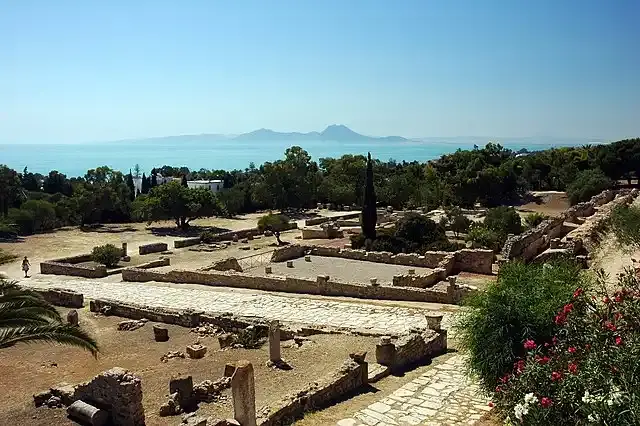
In 218 BC, a Carthaginian commander appeared from the most famous and important military leaders in history, which is "Hannibal", who led the Carthaginians in an attack on the mainland of Italy and achieved several consecutive victories, but the entry of the Romans into "Carthage" forced "Hannibal" to return in 204 BC before completing the occupation of Rome, and the Carthaginian forces were defeated, forcing them to request a peace treaty with the Romans, and these institutes were the unofficial end of the Carthaginian Empire, where Carthage paid enormous compensation that it continued to pay for 50 The possessions of the Carthaginian Empire were greatly reduced and did not again pose a major threat to the Romans.
Third Punic War
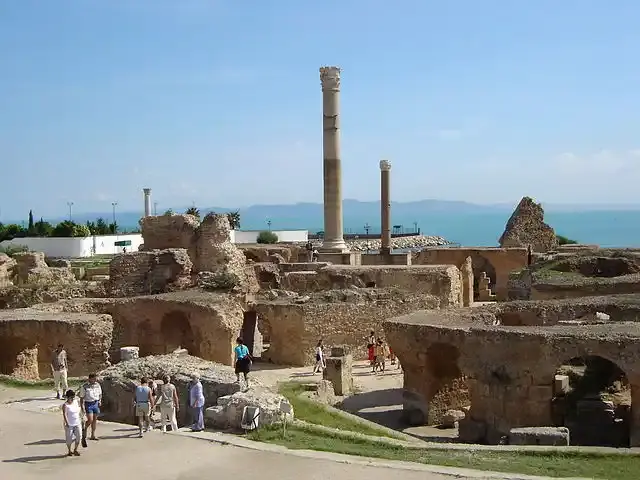
In 149 BC, the Romans invented a reason to declare war on Carthage to eliminate it permanently, so they completely destroyed it and slaughtered most of its people, and Carthage became part of the province of Roman Africa, thus announcing the end of a luminous era in the history of that land that was once one of the most powerful empires that were established on the coasts of the Mediterranean. We find some remains of the city of "Carthage" 16 km from the city of Tunis.








